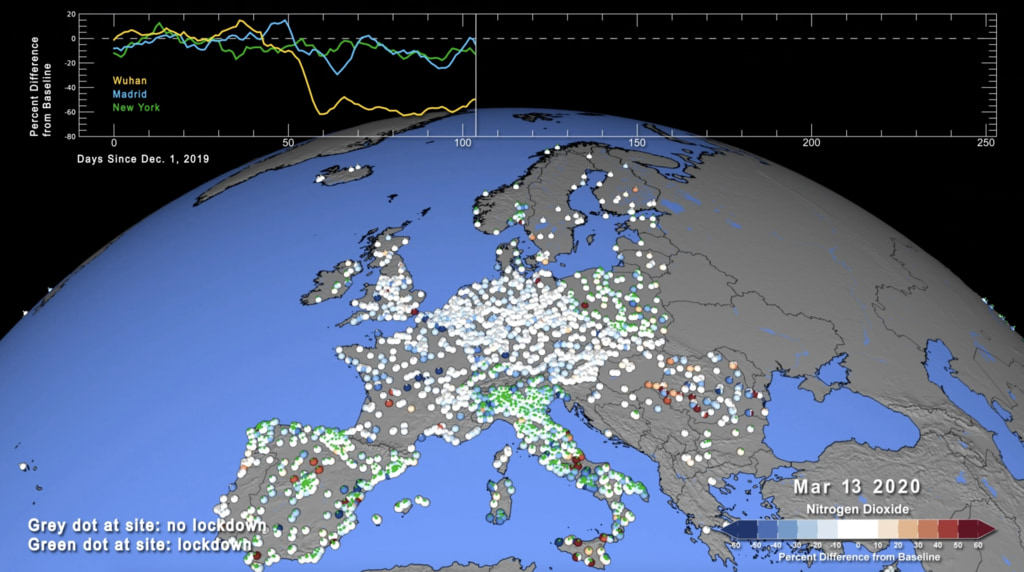NOAA-20 satellite orbit with Suomi NPP and JPSS-2
This short visualization shows the orbit of NOAA-20 along with Suomi NPP. The camera rotates to a view perpendicular to the orbit plan, showing the half-orbit separation between the two satellites.
The Joint Polar Satellite System (JPSS) is the nation’s advanced series of polar-orbiting environmental satellites. JPSS satellites circle the Earth from pole-to-pole and cross the equator 14 times daily in the afternoon orbit—providing full global coverage twice a day. Polar satellites are considered the backbone of the global observing system.
The operational JPSS constellation currently consists of the NASA-NOAA Suomi National Polar-Orbiting Partnership satellite, the technology pathfinder mission for JPSS launched in 2011, and NOAA-20, previously called JPSS-1 and launched in 2017. The next satellite in the series, JPSS-2, is scheduled to launch in the first quarter of 2022. Once it is accepted into the constellation post-launch, JPSS-2 will be renamed NOAA-21 and replace Suomi-NPP.
JPSS represents significant technological and scientific advancements in observations used for severe weather prediction and environmental monitoring. These data are critical to the timeliness and accuracy of forecasts three to seven days in advance of a severe weather event. JPSS is a collaborative effort between NOAA and NASA.
This short visualization shows the orbit of NOAA-20 along with Suomi NPP. The camera rotates to a view perpendicular to the orbit plan, showing the half-orbit separation between the two satellites.
Credits
Please give credit for this item to:
NASA's Scientific Visualization Studio
-
Visualizer
- Kel Elkins (USRA)
-
Producer
- Ashley Hume (ASRC Federal System Solutions)
-
Technical support
- Laurence Schuler (ADNET Systems, Inc.)
- Ian Jones (ADNET Systems, Inc.)
Release date
This page was originally published on Friday, May 8, 2020.
This page was last updated on Monday, January 6, 2025 at 12:18 AM EST.
Datasets used
-
CelesTrak Spacecraft Orbit Ephemeris
ID: 454This dataset can be found at: http://celestrak.com
See all pages that use this dataset
Note: While we identify the data sets used on this page, we do not store any further details, nor the data sets themselves on our site.

